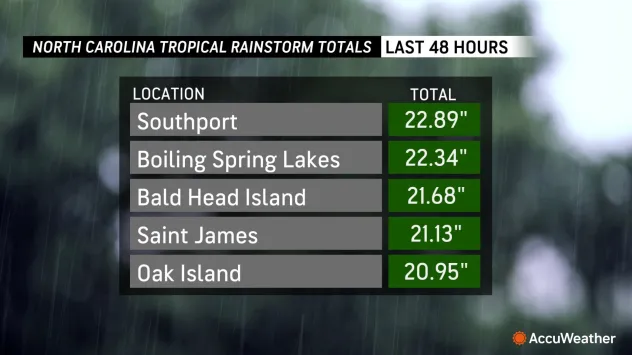A relentless tropical rainstorm unleashed over 20 inches of rain on Brunswick and New Hanover counties in southeastern North Carolina on Monday, causing severe flooding and significant disruption.
The storm’s torrential downpours, which reached rates of 4-5 inches per hour, overwhelmed drainage systems and submerged roads and vehicles across the affected regions. By Monday afternoon, the situation escalated dramatically as AccuWeather storm chaser Aaron Jayjack reported live when a bridge collapsed behind him, sending a car plunging into the floodwaters.
Widespread Flooding and Emergencies Declared
AccuWeather’s live coverage captured alarming scenes from Southport and Carolina Beach, where roads and cars were completely submerged. In response to the escalating situation, Oak Island, located 25 miles southwest of Wilmington, declared a state of emergency just after noon. U.S. Highway 17, a crucial transport route, was partially underwater and closed near Supply.
In Bolivia, North Carolina, the parking lot of the Brunswick County courthouse was engulfed by more than 3 feet of water. Nearby, roads in Carolina Beach turned into rivers, with waist-deep water making travel extremely hazardous.
Rainfall Totals and Continued Threat
As of 2 p.m. EDT, rainfall totals have been staggering. An AccuWeather Ambient weather station in Southport reported 22.89 inches of rain over the last 48 hours. Other gauges across Boiling Spring Lakes, Saint James, Bald Head Island, and Oak Island recorded similar totals exceeding 20 inches. Carolina Beach alone accumulated 18.32 inches of rain between midnight and 1 p.m. EDT Monday.
The heavy rain from the tropical rainstorm is expected to continue moving inland across the Carolinas through tonight, with further flooding and transportation disruptions likely.
Local authorities are urging residents to stay safe and avoid travel in flooded areas. Emergency services are on high alert as they work to manage the ongoing impacts of this severe weather event.
